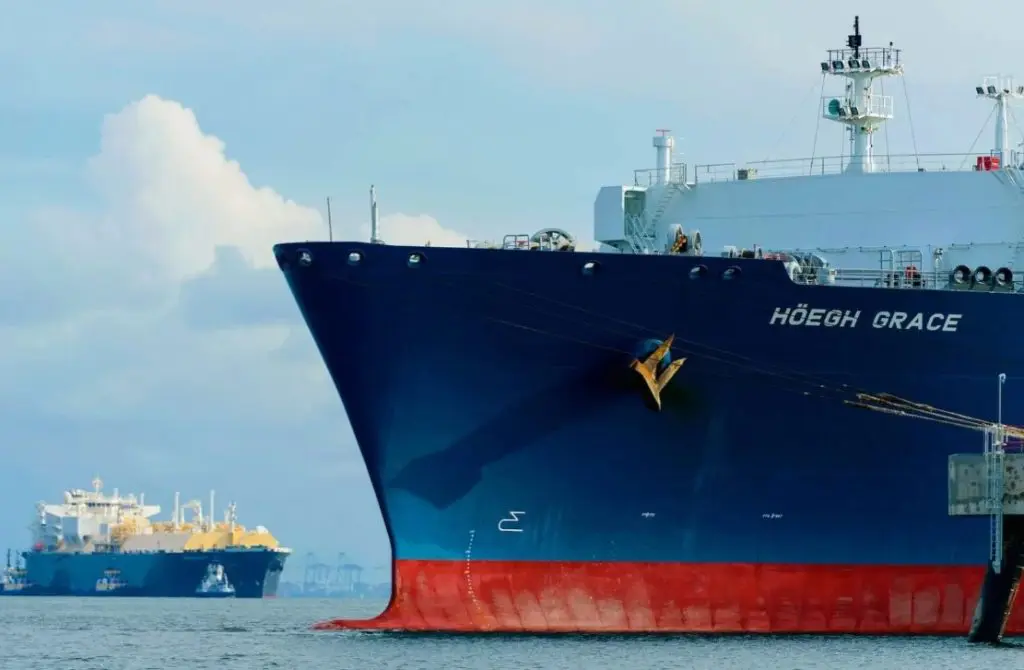This story requires a subscription
This includes a single user license.
“Business activity for potential new FSRU projects remain high across all regions, and in particular there has been increased activity in the Americas region lately,” Hoegh said in its third-quarter report on Thursday.
The company, which recently changed its name, did not provide further details regarding the potential projects.
Hoegh already has FSRUs installed in the region.
The company’s 170,000-cbm FSRU, Hoegh Grace, is currently located in Cartagena, Colombia.
Colombia’s only FSRU-based LNG import facility in Cartagena recently completed its 100th ship-to-ship transfer since 2016, operator SPEC LNG said.
In addition, the 170,000-cbm FSRU, Hoegh Gallant, is serving New Fortress Energy’s offshore Old Harbour facility in Jamaica
Hoegh’s fleet comprises ten FSRUs and three LNG carriers.
The entire fleet is operating under long-term contracts, except the LNG carrier Hoegh Gandria which is currently employed on a short-term LNGC contract ending in the fourth quarter of 2024.
The company intends to employ Hoegh Gandria on another LNGC contract upon the expiry of the existing contract.
Hoegh “very optimistic” on demand for FSRUs
Hoegh said in the previous quarterly report in August that its focus remains on developing a new Dutch FSRU-based facility with VTTI, while the company is working on other projects as well.
In December last year, Rotterdam-based storage terminal owner VTTI, co-owned by Vitol, IFM, and Adnoc, joined forces with Hoegh to develop and operate the Zeeland energy terminal, in the Vlissingen port area, southern Netherlands.
The terminal will be based on an FSRU, which in time, plans to transition from import of LNG to hydrogen.
Hoegh said in its third-quarter report that global LNG production is projected to increase by 45 percent by 2029, and the specialized fleet of LNG carriers is already under construction to transport the molecules to global markets.
“Investments in receiving capacity is however lagging and if the world is going to benefit from the substantial increase in production capacity, then receiving capacity must follow,” the company said.
Hoegh is, therefore, “very optimistic” on the outlook for demand of FSRUs.
As of September this year, the global fleet of FSRUs counted 47 units, excluding four barges with limited storage and/or send-out capacity, according to Hoegh.
“Following the recent surge in demand, only one existing standard unit remains available
for prompt delivery in the market,” Hoegh said.
There are three FSRU newbuilds on order, of which one possibly is available with expected delivery in 2026, while one LNGC is under conversion to FSRU for a designated long-term employment.
Hoegh noted three LNGCs are under conversion to specialized FSRUs set to serve floating LNG-to-power projects.
Results
In the third quarter, Hoegh and its subsidiaries reported a total income of $126.4 million and an Ebitda of $82.7 million.
This represents a decrease in total income from the previous quarter’s $130.2 million, while Ebitda increased from $74.9 million.
Hoegh said the increase in Ebitda is primarily due to the rise in charter income from Hoegh Galleon coupled with the absence of the positioning and project cost incurred in the previous quarter before Hoegh Galleon started operations in Egypt.
However, this increase was partially offset by a reduction in charter income from Hoegh Gandria, it said.
In the third quarter, the group’s profit after tax was $26.3 million, reflecting a $7.6 million increase from the preceding quarter’s $18.7 million.
Operating cash flows increased by $35 million in the third quarter, reaching $86.2 million.

